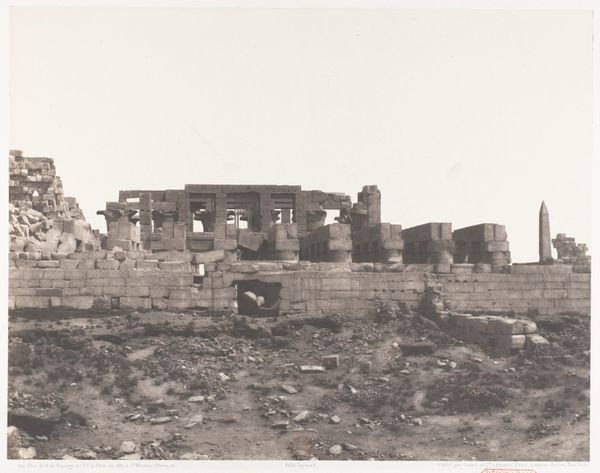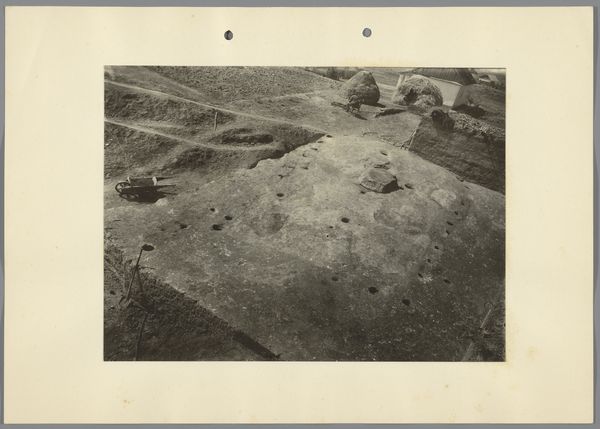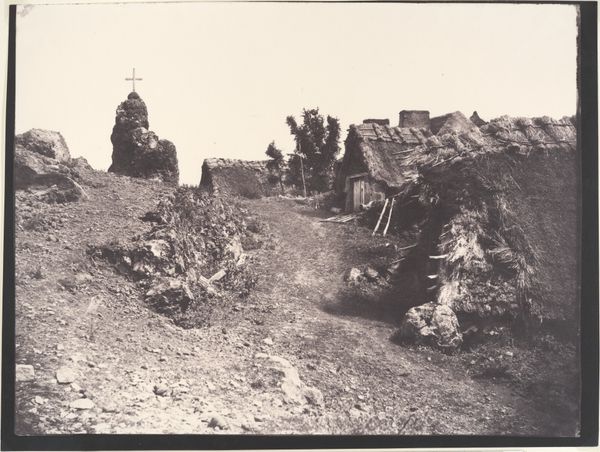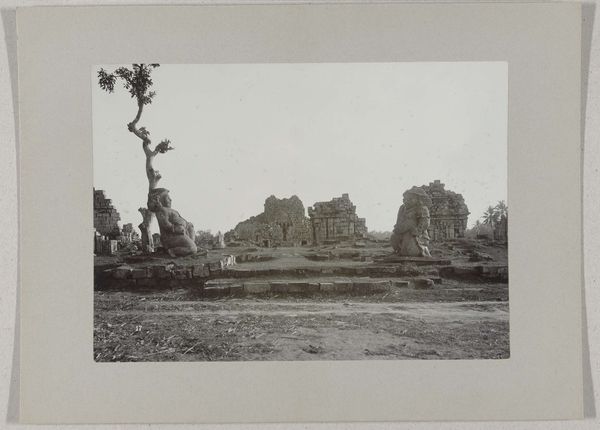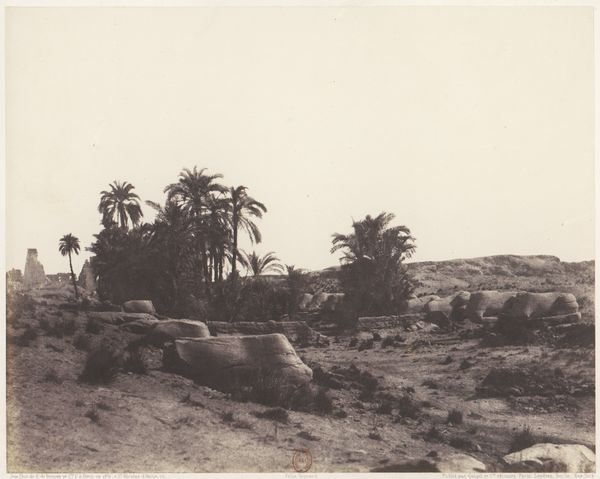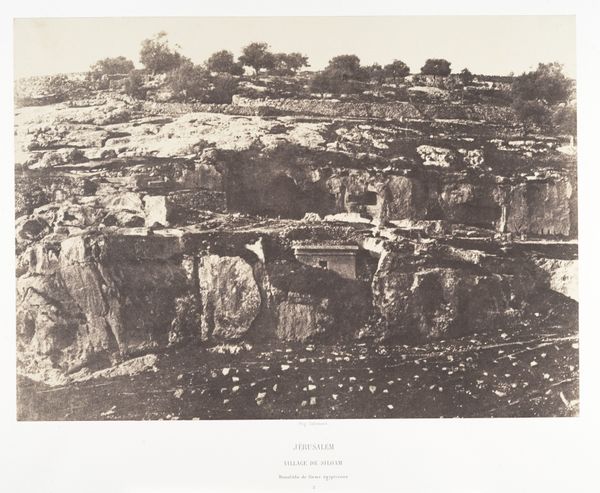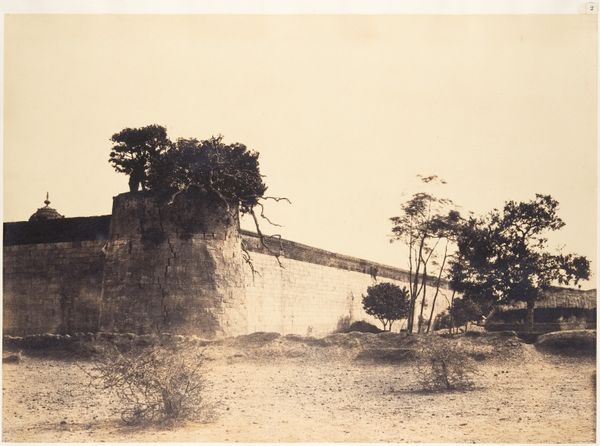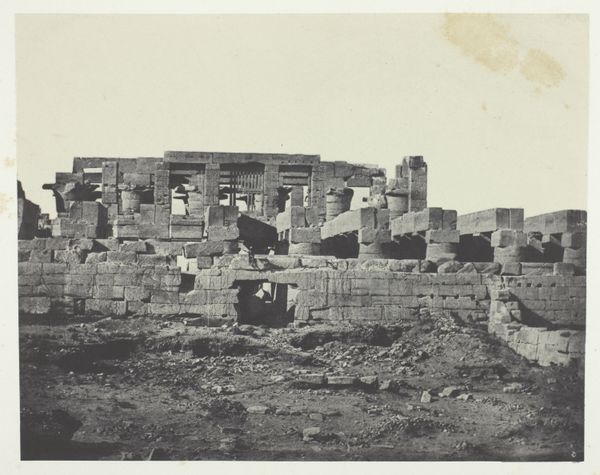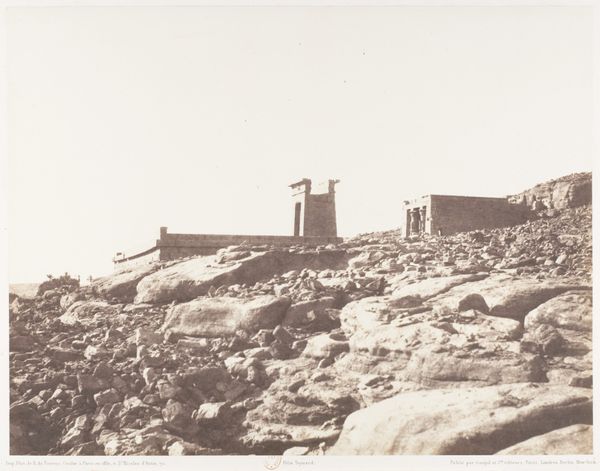
print, photography
# print
#
landscape
#
photography
#
realism
Dimensions: height 297 mm, width 450 mm
Copyright: Rijks Museum: Open Domain
Curator: This compelling photographic print, "Opslagplaats van ampas bij suikerfabriek Boedoeran in Sidoarjo op Java," captures a storage place near a sugar factory. Its creation dates circa 1925-1930, offering a glimpse into an industrial landscape of Java. Editor: It evokes a sense of immense physical labor and agricultural exploitation, the tonal range gives it an almost oppressive, documentary feel, focusing primarily on these monumental structures of stacked material and tiny human presence nearby. Curator: Indeed, the photograph's composition relies heavily on geometric form. The sharp rectangular blocks of the piled material, create an almost architectural, imposing form against the tropical backdrop, giving a stark juxtaposition. The palm trees soften the sharp lines, establishing the image in place and time. Editor: But beyond geometry, the photograph offers a stark visualization of the impact of Dutch colonialism in Indonesia. We see these people and a sugar factory—a plant linked to exploitation, dispossession of land, forced labor, and disrupted local food systems. Curator: From a formalist perspective, I am interested in the repetition of the blocks, how they create both depth and surface tension, but I agree, this photographic print offers far more than simple lines and shapes; it invites viewers to engage with questions of ethics. Editor: Absolutely. How can we overlook the absence of representation, of workers within the sugar industry and question how systems of power are depicted in its visual culture? Curator: I concede that such photographs, seemingly objective records of their time, frequently operate as proponents in power narratives, dictating both what we perceive and what remains conveniently concealed. Editor: Precisely! What appears mundane contains multilayered social and historical constructs waiting to be excavated. Curator: Seeing beyond aesthetics does enhance the artistic comprehension and depth within the photograph; viewing art via sociopolitical views enables dialogues previously left concealed. Editor: Indeed, may we move ahead in questioning representations through art that shape and define world perceptions?
Comments
No comments
Be the first to comment and join the conversation on the ultimate creative platform.

